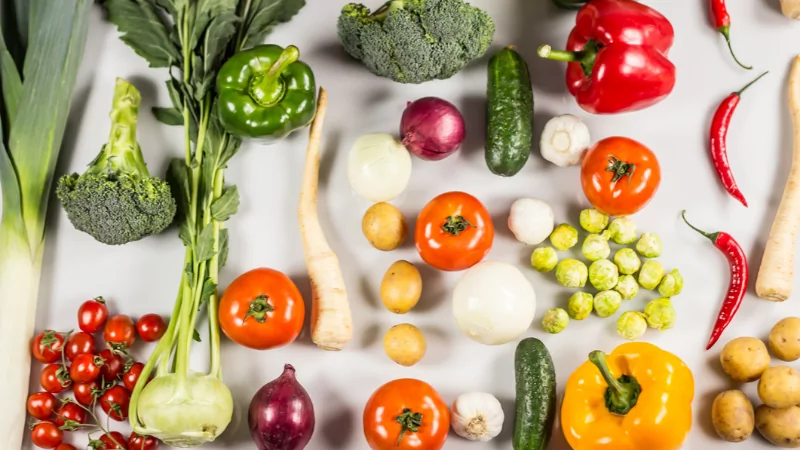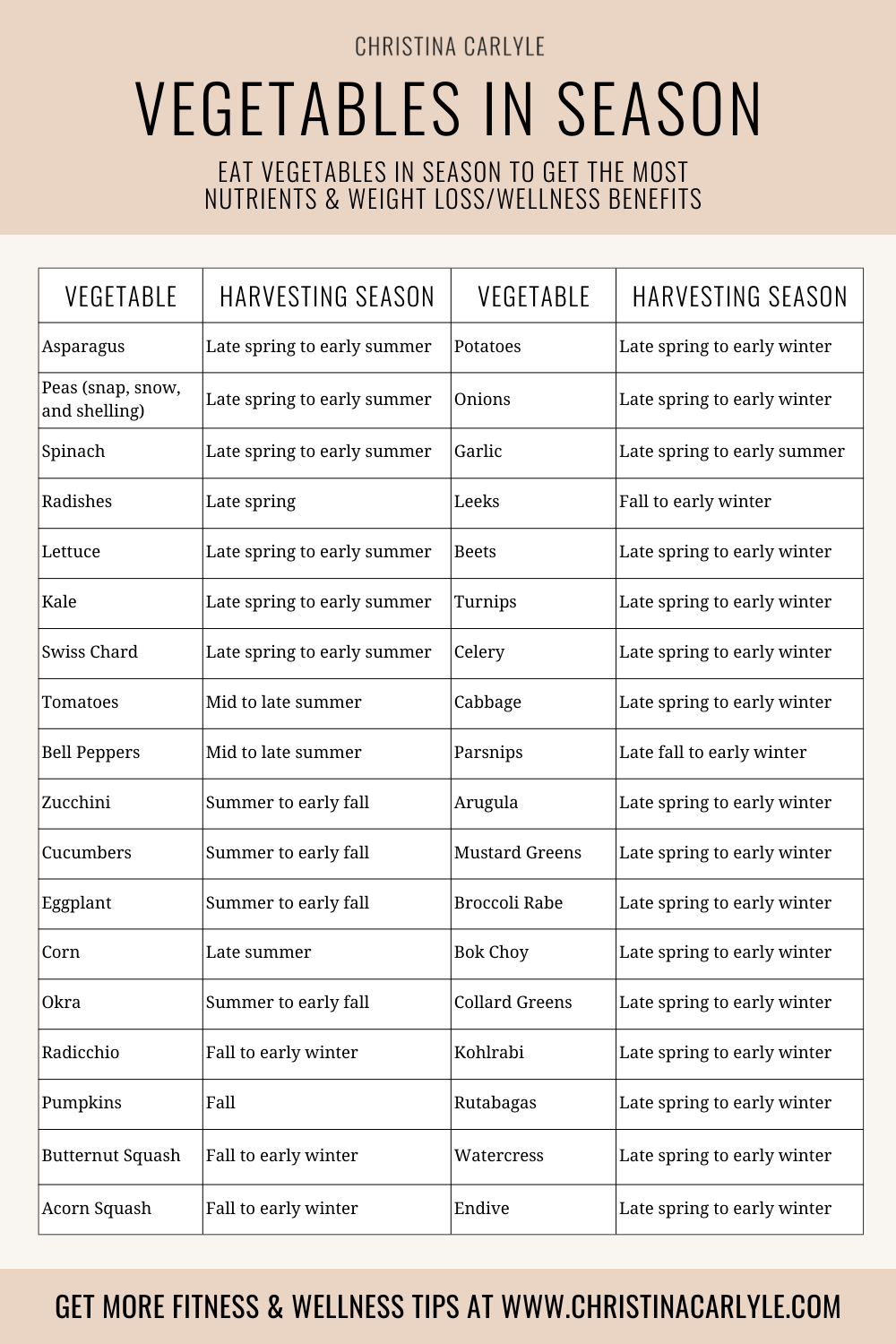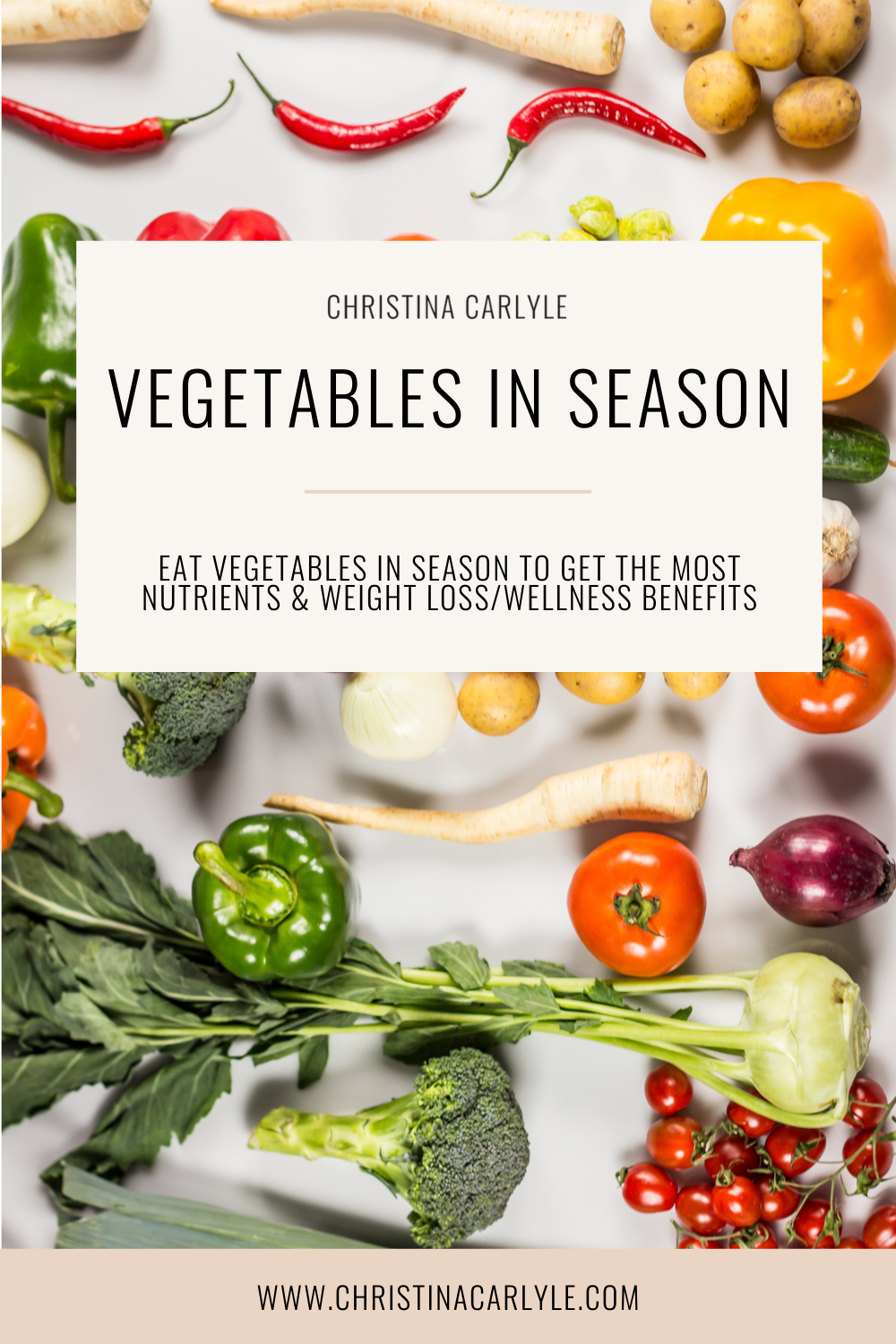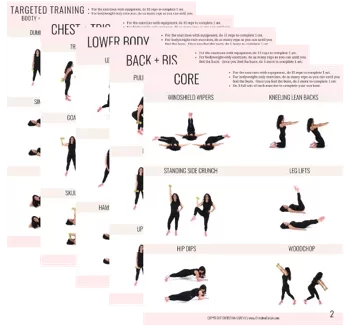Last Updated on October 19, 2023
Are you looking to shed a few pounds, boost your overall wellness, and do your part for the environment? It might be simpler than you think!
Eating vegetables in season can be a powerful strategy to achieve all these goals. In this blog post, we’ll delve into the reasons why consuming seasonal vegetables is not only good for your health but also for your weight loss journey.
Then I’ll share a list of 40 popular vegetables and their planting, growing, and harvesting seasons. As well as a list of ways to enjoy your seasonal vegetables so you can maximize taste and nutrient intake.
Seasonal Vegetables: A Nutrient-Packed Weight Loss and Wellness Solution
Eating vegetables that are in season means you are enjoying them at their peak in terms of flavor and nutritional content. When vegetables are grown in their natural season, they’ve had the time and environment to develop essential nutrients and phytochemicals that your body needs to thrive.
1. Nutrient Density
Seasonal vegetables are packed with vitamins, minerals, and antioxidants, making them ideal for anyone on a weight loss journey. These nutrients can help support your metabolism, reduce inflammation, and provide the necessary energy to maintain healthy metabolism and an active lifestyle.
2. Low-Calorie Options
Most seasonal vegetables are naturally low in calories but high in fiber and nutrients, helping you feel full without overindulging in unhealthy snacks or large portions. This reduced calorie intake can contribute to weight loss when part of a balanced diet.
3. Variety and Balance
Eating vegetables in season encourages variety in your diet, which is crucial for overall health and weight management. Different vegetables provide unique nutrients, and by consuming a variety of them, you ensure that your body receives a wide spectrum of beneficial compounds.
40 Vegetables in season now
Here is a list of 40 vegetables and their planting, growing, and harvesting seasons, based on typical seasonal patterns. By eating vegetables according to their season you can get the most nutrients and best flavor.
Please note that the specific timing may vary depending on your location and climate, so it’s essential to refer to local gardening resources or consult with local experts for more precise information:
Spring Vegetables:
- Asparagus
-
- Plant: Early spring
- Grow: Spring to early summer
- Harvest: Late spring to early summer
- Peas (snap, snow, and shelling)
- Plant: Early spring
- Grow: Spring to early summer
- Harvest: Late spring to early summer
- Spinach
- Plant: Early spring
- Grow: Spring to early summer
- Harvest: Late spring to early summer
- Radishes
- Plant: Early spring
- Grow: Spring
- Harvest: Late spring
- Lettuce
- Plant: Early spring
- Grow: Spring to early summer
- Harvest: Late spring to early summer
- Kale
- Plant: Early spring
- Grow: Spring to early summer
- Harvest: Late spring to early summer
- Swiss Chard
- Plant: Early spring
- Grow: Spring to early summer
- Harvest: Late spring to early summer
Summer Vegetables:
- Tomatoes
- Plant: Late spring to early summer
- Grow: Summer
- Harvest: Mid to late summer
- Bell Peppers
- Plant: Late spring to early summer
- Grow: Summer
- Harvest: Mid to late summer
- Zucchini
- Plant: Late spring to early summer
- Grow: Summer
- Harvest: Summer to early fall
- Cucumbers
- Plant: Late spring to early summer
- Grow: Summer
- Harvest: Summer to early fall
- Eggplant
- Plant: Late spring to early summer
- Grow: Summer
- Harvest: Summer to early fall
- Corn
- Plant: Late spring to early summer
- Grow: Summer
- Harvest: Late summer
- Okra
- Plant: Late spring to early summer
- Grow: Summer
- Harvest: Summer to early fall
Fall Vegetables:
- Carrots
- Plant: Late summer
- Grow: Fall to early winter
- Harvest: Fall to early winter
- Broccoli
- Plant: Late summer
- Grow: Fall to early winter
- Harvest: Fall to early winter
- Cauliflower
- Plant: Late summer
- Grow: Fall to early winter
- Harvest: Fall to early winter
- Brussels Sprouts
- Plant: Late summer
- Grow: Fall to early winter
- Harvest: Late fall to early winter
- Radicchio
- Plant: Late summer
- Grow: Fall to early winter
- Harvest: Fall to early winter
- Pumpkins
- Plant: Late summer
- Grow: Fall
- Harvest: Fall
- Butternut Squash
- Plant: Late summer
- Grow: Fall
- Harvest: Fall to early winter
- Acorn Squash
- Plant: Late summer
- Grow: Fall
- Harvest: Fall to early winter
Year-Round Vegetables:
- Potatoes
- Plant: Early spring to early summer
- Grow: Spring to early winter
- Harvest: Late spring to early winter
- Onions
- Plant: Spring to early summer
- Grow: Spring to early winter
- Harvest: Late spring to early winter
- Garlic
- Plant: Late fall to early winter
- Grow: Fall to early summer
- Harvest: Late spring to early summer
- Leeks
- Plant: Early spring to early summer
- Grow: Spring to early winter
- Harvest: Fall to early winter
- Beets
- Plant: Early spring to early summer
- Grow: Spring to early winter
- Harvest: Late spring to early winter
- Turnips
- Plant: Early spring to early summer
- Grow: Spring to early winter
- Harvest: Late spring to early winter
- Celery
- Plant: Early spring to early summer
- Grow: Spring to early winter
- Harvest: Late spring to early winter
- Cabbage
- Plant: Early spring to early summer
- Grow: Spring to early winter
- Harvest: Late spring to early winter
- Parsnips
- Plant: Early spring to early summer
- Grow: Spring to early winter
- Harvest: Late fall to early winter
- Arugula
- Plant: Early spring to early summer
- Grow: Spring to early winter
- Harvest: Late spring to early winter
- Mustard Greens
- Plant: Early spring to early summer
- Grow: Spring to early winter
- Harvest: Late spring to early winter
- Broccoli Rabe
- Plant: Early spring to early summer
- Grow: Spring to early winter
- Harvest: Late spring to early winter
- Bok Choy
- Plant: Early spring to early summer
- Grow: Spring to early winter
- Harvest: Late spring to early winter
- Collard Greens
- Plant: Early spring to early summer
- Grow: Spring to early winter
- Harvest: Late spring to early winter
- Kohlrabi
- Plant: Early spring to early summer
- Grow: Spring to early winter
- Harvest: Late spring to early winter
- Rutabagas
- Plant: Early spring to early summer
- Grow: Spring to early winter
- Harvest: Late spring to early winter
- Watercress
- Plant: Early spring to early summer
- Grow: Spring to early winter
- Harvest: Late spring to early winter
- Endive
- Plant: Early spring to early summer
- Grow: Spring to early winter
- Harvest: Late spring to early winter
25 Ways to Enjoy Seasonal Vegetables
Keep in mind that these planting and harvesting seasons can vary based on local climate conditions, so it’s essential to adjust your planting schedule accordingly. Additionally, consider using a gardening calendar or consulting local agricultural extension offices for precise planting recommendations in your area.
Enjoying vegetables in season offers a variety of delicious and healthy options. Here are different ways to savor your seasonal vegetables:
- Raw in Salads: Create fresh salads with seasonal greens, tomatoes, cucumbers, and more. Add a homemade vinaigrette for a burst of flavor.
- Roasted: Roasting vegetables like carrots, Brussels sprouts, and butternut squash with olive oil and herbs enhances their natural sweetness.
- Grilled: Grill vegetables like bell peppers, zucchini, and asparagus. Drizzle with olive oil and season with salt and pepper for a smoky flavor.
- Stir-Fried: Create vibrant stir-fries with a mix of seasonal vegetables and tofu or lean protein, seasoned with soy sauce or a stir-fry sauce.
- Sautéed: Sautéing vegetables such as spinach, kale, or Swiss chard with garlic and a touch of olive oil is a quick and nutritious option.
- Pickled: Make homemade pickles or quick pickled vegetables using cucumbers, radishes, or cauliflower.
- Mashed or Puréed: Create creamy mashed potatoes, cauliflower, or butternut squash, using olive oil or Greek yogurt for a healthy twist.
- Fermented: Experiment with fermenting vegetables like sauerkraut or kimchi for gut-healthy options.
- Grated for Slaw: Make coleslaw using cabbage, carrots, and other seasonal vegetables, dressed with a light vinaigrette.
- Baked: Incorporate vegetables into casseroles or vegetable lasagna for a comforting, hearty meal.
- In Soups: Make hearty soups and stews by using seasonal vegetables like sweet potatoes, pumpkin, or winter squash.
- In Smoothies: Add spinach, kale, or beets to your morning smoothie for a nutritious start to the day.
- In Omelets: Add sautéed or roasted seasonal vegetables to omelets or frittatas for a protein-packed breakfast.
- In Pasta Dishes: Incorporate seasonal vegetables into pasta dishes, like a light primavera or a rich ratatouille.
- As a Side Dish: Serve seasonal vegetables as simple sides, steamed or lightly sautéed, with a drizzle of lemon juice.
- In Smoothie Bowls: Top smoothie bowls with fresh fruit and vegetable slices for added texture and nutrients.
- In Wraps or Roll-Ups: Roll up seasonal vegetables with lean protein in lettuce wraps or rice paper rolls.
- Baked into Egg Muffins or Quiche: Add vegetables into egg muffins or quiche for added fiber and nutrients. Seasonal vegetables like asparagus, mushrooms, broccoli, onions, or spinach are great options.
- In Tacos or Burritos: Make vegetable-packed tacos or burritos with sautéed or roasted vegetables and your favorite toppings.
- As a Base for Buddha Bowls: Use a variety of roasted and raw seasonal vegetables as the base for a nutrient-packed Buddha bowl.
- In Juices and Smoothies: Extract the juice from seasonal vegetables or blend them into nutritious smoothies.
- In Buddah Bowls: Add roasted or sautéed vegetables to bowls with quinoa, rice, or beans.
- In Spring/Sushi Rolls: Roll up fresh, raw seasonal vegetables in rice paper or seaweed with herbs and your choice of protein to create vegetable-centric spring and sushi rolls with avocado, cucumber, and other seasonal favorites.
- Sliced for Crudité Platters: Serve sliced seasonal vegetables as part of a colorful and healthy crudité platter.
- As a Base for Veggie Noodles: Use a spiralizer to turn zucchini, sweet potatoes, or beets into veggie noodles for a low-carb alternative.
Enjoying vegetables in season allows you to experience their fullest flavors and nutritional benefits while supporting local agriculture. Experiment with these various preparation methods to make the most of what each season has to offer.
I hope this inspired you to eat more vegetables in season.
Please note that even though eating vegetables in season can help maximize health and metabolism. But it’s best to eat vegetables that are best for your unique metabolic type and needs… that’s because different metabolic types digest and metabolize vegetables differently.
The best vegetables for you are determined by your metabolic type. If you don’t know your metabolic type yet, take my Metabolic Type Quiz & Training.
Your Coach & Biggest Cheerleader,
![]()
If you liked this post, you’ll love these:







